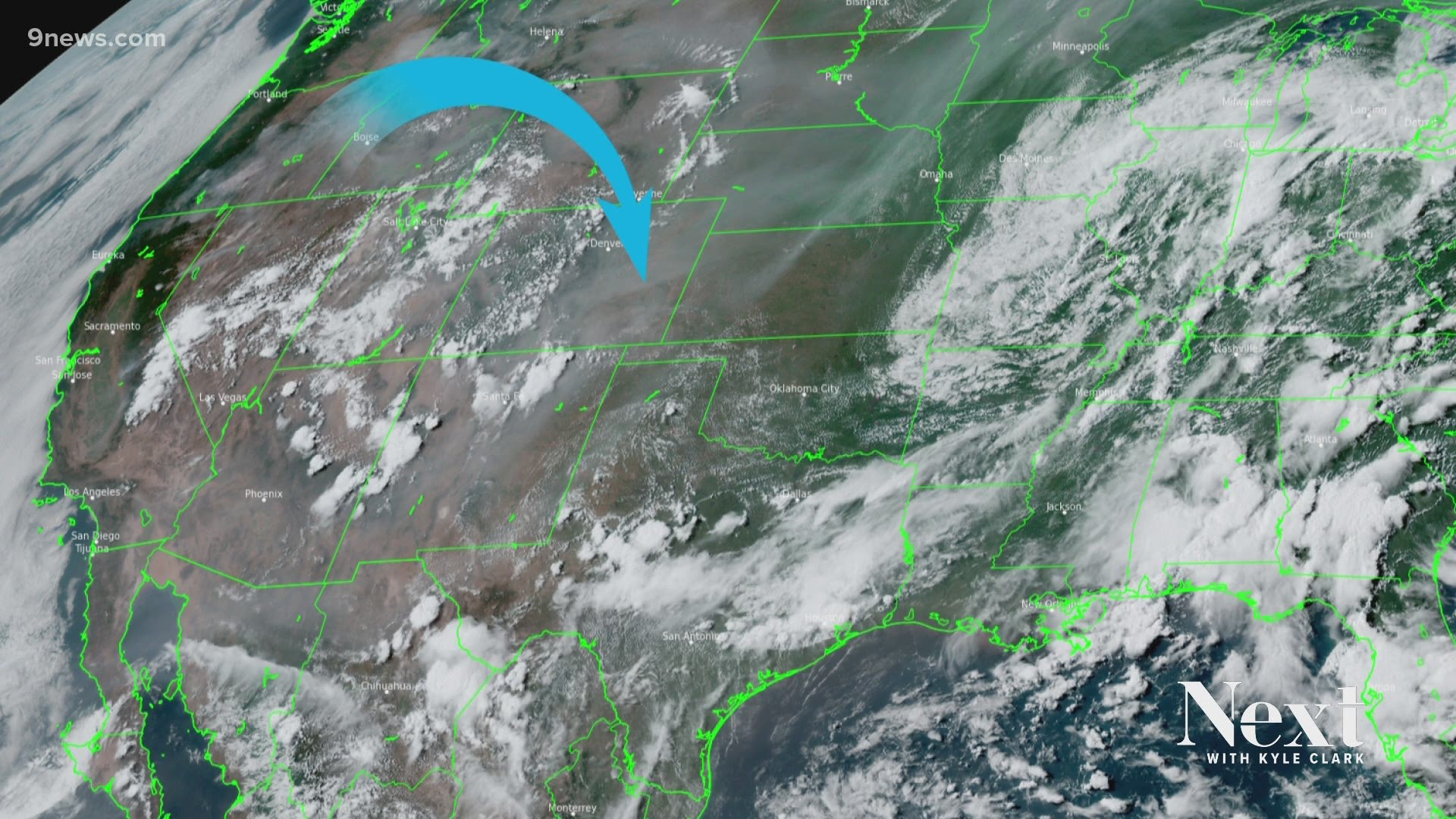FORT COLLINS, Colo. — Most of the wildfire smoke in Colorado has been coming from more than 900 miles away.
From big wildfires in places like California, Oregon, Washington, Idaho and Montana.
By the time that smoke reaches us, only the smallest smoke particles are left in the air. That concerns scientists at Colorado State University.
The smaller the pollutant, the more harmful it is to human health.
9NEWS asked Sheryl Magzamen about the impacts. She is an associate professor in the Environmental and Radiological Health Sciences at Colorado State University.
(Editor's note: Answers have been edited for context and clarity.)
9NEWS: Why are you concerned about those very small smoke particles that travel to Colorado from out of state?
Magzamen: The reason we are so concerned about that is those particles are microscopic. They’re incredibly small and they can penetrate deep into our respiratory system and into our lungs.
What do you call those particles?
Magzamen: They are called fine particulate matter or PM 2.5 which stands for particulate matter that is 2.5 microns or smaller. Most air quality alerts will specifically mention PM 2.5 levels which could also include ground ozone -- another fine particulate.
What happens to our bodies when we breath in those particles?
Magzamen: In our lungs, it causes inflammation which disrupts the way our body converts oxygen and carbon dioxide. It can also get into our bloodstream and cause inflammation in other organs like the heart. It can lead to a hospitalization or even death in some cases.
Can that happen to anyone?
Magzamen: Yes, but it is more common with people that have preexisting respiratory problems like lung disease, asthma, or COPD. It can also be dangerous for people with other medical issues like diabetes.
Are there groups of healthy people that are more susceptible to wildfire smoke?
Magzamen: We are very concerned about children, the elderly and pregnant women.
What about healthy people that are not in a 'sensitive groups' category?
Magzamen: This is a really new area in wildfire research, and we are just at the tipping point of understanding what the long term affects of this constant exposure that we are getting season after season look like.
Is wildfire smoke from out of state just as dangerous as wildfire smoke from a local fire?
Magzamen: Yes. There are high concentrations of fine particulate matter in both local wildfire smoke and smoke that travels a great distance, but people don't protect themselves quite as well from distant smoke.
What makes you say that?
Magzamen: We did a study using wildfire seasons of the past referenced to hospital records during those wildfires. We found that hospital visits and hospitalizations on the Front Range were high when the wildfire smoke was coming from out of state, and they were lower when the fires were nearby. So that is just our leading hypothesis.
Why don't people protect themselves from distant smoke?
Magzamen: When the fires are nearby, there is a lot of media coverage, the intensity levels are higher and so too is the awareness. Your senses are heightened as well. You can see the glow, the smoke is thicker and more ominous, and you can smell the fire when it's nearby.
Why does the smoke not smell as strong when it is transported from out of state?
Magzamen: As the wildfire smoke is transported, the chemical composition changes and it loses that characteristic smell that you are uses to when you are nearby a fire. Perhaps someone might think that the smoke is not dangerous if it doesn't have that strong smell, or maybe they think that old smoke is not dangerous. That just isn't the case.
SUGGESTED VIDEOS: Latest from 9NEWS

